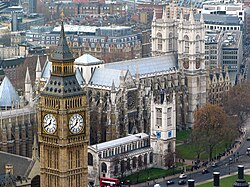Guide to Fire Safety for Listed Buildings Managers
- markgregory3
- Oct 1, 2024
- 3 min read
Updated: Oct 24, 2024
Listed buildings in the UK are subject to the same fire safety legislation as any other building. However, any changes made to a listed building must also comply with planning regulations set out by the local authority. This means that the fire safety measures chosen MUST minimise damage to the historic fabric of the building. When considering fire safety measures, the local authority will consult with specialists from Historic England to ensure a balance is struck between fire safety and historic preservation.
Do restrictions of listed buildings apply to fire safety measures?
Restrictions on alterations and extensions: Pretty much any work that affects the building’s interior or exterior requires approval through a process called Listed Building Consent. This applies to things like demolition, extensions, renovations, or even replacing windows.
Preserving character: The core principle is to maintain the building’s special features. This means getting consent for things that might seem minor, like replacing brickwork or repointing with inappropriate materials.
Limited freedom for modernisations: Adding things like modern plumbing, electrical wiring, or fire/security systems can be tricky. Consent will likely only be granted if they can be installed discreetly without harming the historical character.
Wireless fire alarms do not require power to every sounder to operate, therefore there’s a lot less disruption and invasive building work required to bring a listed buildings fire protection up to the required British standards as per the Fire Safety Order of 2005.
Guide to Fire Safety for Listed Buildings Managers
Things to consider when it comes to fire safety for listed buildings
Commission a Fire Risk Assessment: A thorough fire risk assessment is crucial. This identifies potential fire hazards specific to the building’s layout, materials, and use. It should consider traditional construction materials (often more combustible) and hidden voids that can accelerate fire spread.
Consider minimally disruptive measures: Fire safety improvements should be as discreet as possible. Look for options like mist fire suppression systems that cause less water damage compared to sprinklers.
Work with fire services: Consulting with the local fire service is vital. They can provide expert advice on achieving fire compliance while respecting the building’s heritage.
Preserve escape routes: Maintaining clear escape routes is essential. This might involve retrofitting fire doors that blend in with the historical style or strategically placing fire extinguishers.
Manage electrical safety: Review the building’s electrical system to ensure it’s up to code and doesn’t pose a fire risk. Upgrading the wiring might be necessary, but it should be done covertly if possible. Renovations for listed buildings may have been done be
New fire safety technology available for listed buildings
Listed buildings present a unique challenge for fire safety. Thankfully, new technologies are emerging to help improve protection while minimising impact on historical features. Here are some developments to consider:
Advanced fire suppression systems:
Mist fire suppression systems: These use a fine water mist to extinguish fires, causing significantly less water damage compared to traditional sprinklers. This makes them ideal for listed buildings with sensitive materials like wood or plasterwork.
Water mist with inert gases: This combines a water mist with inert gases like argon or nitrogen to extinguish fires by reducing oxygen and cooling the flames. It’s even more water-efficient than pure mist systems.
Smart fire detection systems:
Wireless sensor networks: These use a network of battery-powered sensors to detect smoke, heat, and CO. They’re easy to install without drilling or damaging historical features.
Advanced camera systems: Thermal imaging cameras can detect heat signatures of potential fires even before flames appear. Facial recognition can also be integrated to help with occupant evacuation.
Passive fire protection advancements:
Fire-resistant coatings: These clear or translucent coatings can be applied to historical materials like wood to make them more fire-resistant.
Intumescent coatings: These coatings expand when exposed to heat, creating a fire-resistant barrier that protects underlying materials. They can be formulated in subtle tones to minimise visual impact.
Ready to take the next step ?
Now you've read our Our Guide to Fire Safety for Listed Buildings Managers, our fire alarm professionals can help you choose the right system for your unique needs and ensure it’s properly installed and maintained. Contact us today for a free quotation.
